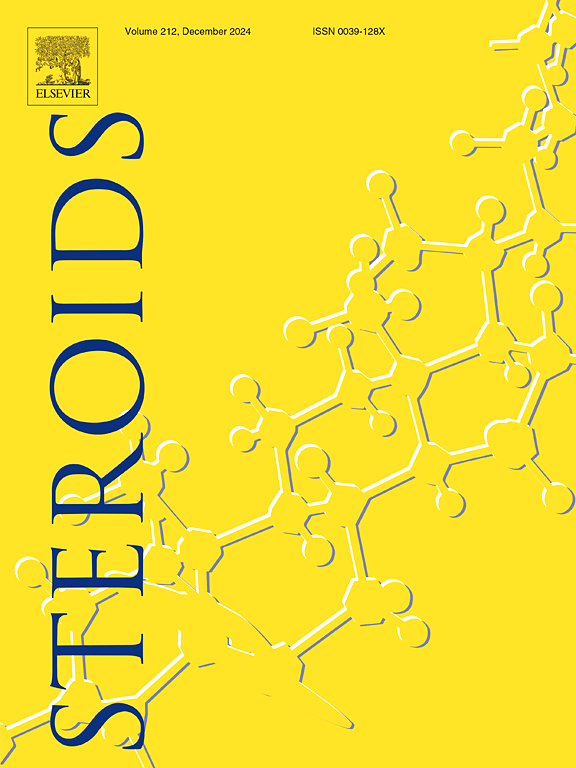Microbial steroid biotransformation: Regio- and stereo selective 17β-reduction by Priestia aryabhattai
IF 2.1
4区 医学
Q4 BIOCHEMISTRY & MOLECULAR BIOLOGY
引用次数: 0
Abstract
The conversion of 17-oxosteroids to 17β-hydroxysteroids stands as a pivotal process in the synthesis of numerous steroidal drugs and intermediates. This study explored the potential of the strain Priestia aryabhattai (IICT-BC-1279) to catalyze the reduction of the C-17 carbonyl group in androst-4-ene-3,17-dione (AD), resulting in the exclusive production of testosterone (TS) through its 17β-hydroxysteroid dehydrogenase (17β-HSD) activity. Optimal conditions for this reduction were achieved at pH 7.0 and 25 °C, with supplementation of AD as an inducer (0.01 g/L), 1 % Tween 80 (w/v) and ethanol as co-solvent. Under these optimized parameters, 0.5 g/L AD was efficiently converted to TS as a sole product, achieving a yield of > 95 % and diastereomeric excess (d.e) of > 99 % within 48 h. The absence of by-products in this microbial 17β-reduction process simplifies product purification, highlighting the strain’s potential as a valuable biocatalyst for this essential transformation. Additionally, the conversion of androsta-1,4-diene-3,17-dione (ADD) to (+)-Boldenone (BD) was studied to explore substrate scope.
微生物类固醇生物转化:紫花蓟马区域和立体选择性还原17β
17-氧类固醇转化为17- β-羟基类固醇是合成许多类固醇药物和中间体的关键过程。本研究探讨了菌株Priestia aryabhattai (IICT-BC-1279)催化雄激素-4-烯-3,17-二酮(AD)中C-17羰基的还原,通过其17β-羟基类固醇脱氢酶(17β-HSD)活性产生睾酮(TS)的潜力。最佳还原条件为pH 7.0和25°C,添加AD作为诱导剂(0.01 g/L), 1% Tween 80 (w/v)和乙醇作为共溶剂。在此优化条件下,0.5 g/L AD可高效转化为TS,产率为>;95%和非对映体过量(d.e);在这个微生物17β还原过程中没有副产物简化了产物纯化,突出了菌株作为这一重要转化的有价值的生物催化剂的潜力。此外,还研究了androta -1,4-二烯-3,17-二酮(ADD)转化为(+)-Boldenone (BD)的过程,以探索底物范围。
本文章由计算机程序翻译,如有差异,请以英文原文为准。
求助全文
约1分钟内获得全文
求助全文
来源期刊

Steroids
医学-内分泌学与代谢
CiteScore
5.10
自引率
3.70%
发文量
120
审稿时长
73 days
期刊介绍:
STEROIDS is an international research journal devoted to studies on all chemical and biological aspects of steroidal moieties. The journal focuses on both experimental and theoretical studies on the biology, chemistry, biosynthesis, metabolism, molecular biology, physiology and pharmacology of steroids and other molecules that target or regulate steroid receptors. Manuscripts presenting clinical research related to steroids, steroid drug development, comparative endocrinology of steroid hormones, investigations on the mechanism of steroid action and steroid chemistry are all appropriate for submission for peer review. STEROIDS publishes both original research and timely reviews. For details concerning the preparation of manuscripts see Instructions to Authors, which is published in each issue of the journal.
 求助内容:
求助内容: 应助结果提醒方式:
应助结果提醒方式:


